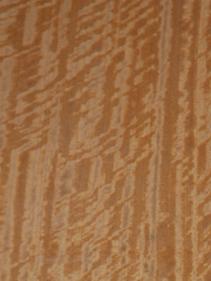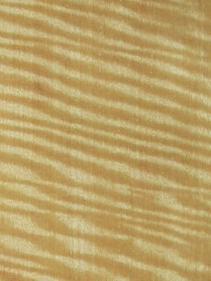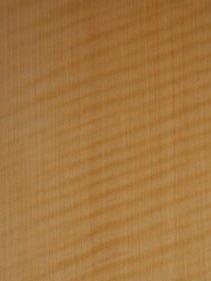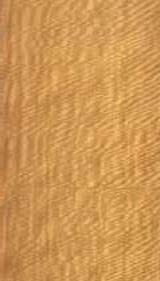- HOME
- ABOUT VENEER
- DOMESTIC
- EXOTIC
- BURL/CROTCH
- DYED VENEER
- PROJECTS
- CABINETS
- ACCESSORIES
- DOORS
- PANELS
- FIXTURES
- FURNITURE
- CUE COMPONENTS
- ON SALE
Satinwood Ceylon/African/Brazilian Veneer Information
Ceylon is also called Burutu and Sengel and comes from India, Pakistan and Sri Lanka. It is hard to believe that this wood could be used for anything other than decorative applications but in reality it even gets used for wheel spokes. This is a species that produces several attractive patterns which include mottle, roey and ribbon, broken stripe, bee's wing and cross mottle. You won't see a lot of this wood in lumber form. We do keep some in stock at times but it can get very brittle when stored for long periods of time. You have to be careful that it doesn't dry out to much. Ayan (African Satinwood) is also called Movingui and Nigerian Satinwood. This is another one of those really pretty woods that gets used for railroad ties if there's nothing decorative to do with it. Most of the production of this particular wood comes from Cameroon, Ghana and Nigeria. One thing about Satinwoods in general is that they all seem to have a fair amount of silica and African Satinwood is no different and maybe worse. A silica content of .05% is considered high and this wood can actually get up as high as 1.3%. How long do you think you can hold an edge under those conditions? Movingui is produced in fairly low volumes so there may not be a ton of it around on a regular basis. We have had it and do have it from time to time but not on a regular basis. There is another African wood by the name of Amani Satinwood which you guessed it is also called East African Satinwood. Which must be because it comes from Tanzania? So last but not least there is a wood called Brazilian Satinwood or Pau Amarello, Boxwood, Canarywood and it does come from Brazil. Actually it grows exclusively in the dry land areas of Brazils Para State, in the lower Amazon and we all know right where that is. I have never worked with this particular wood and I would like to hear about it from any one that has. Ok last but not least the real deal is suppose to be West Indian Satinwood which comes from the Americas but is extremely rare. I have never seen it nor do I know anyone alse that has either. So again I would really like to know what it is like to work with or see a pictuire of it as a piece of furnitue or a sample of veneer or lumber. So obviously we do not have any in our inventory.
Satinwood Ceylon / Indian

Satinwood Movingui / Africa

Satinwood Brazilian / S America

Satinwood Fig Movingui / Africa
